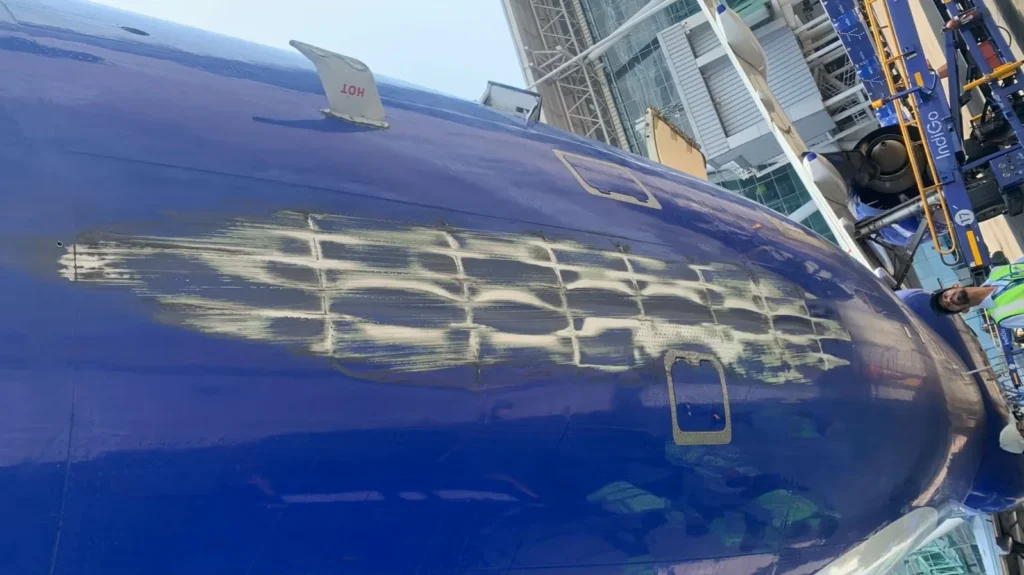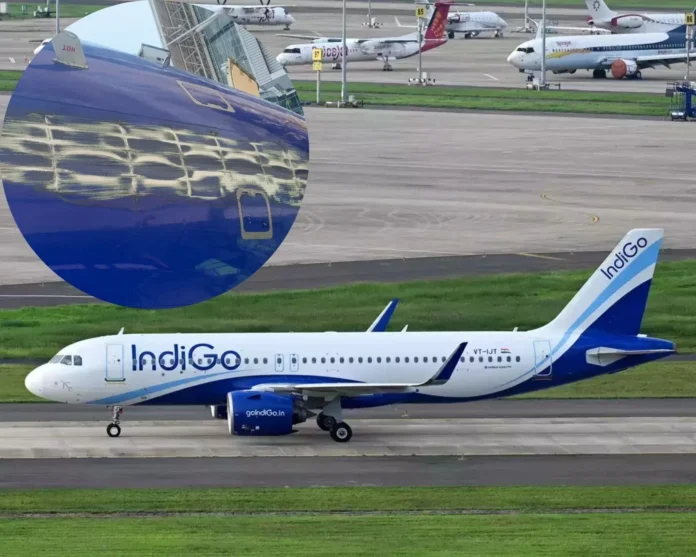IndiGo Tail Strike Incident
The Directorate General of Civil Aviation (DGCA) has initiated an inquiry following a tail strike incident involving an IndiGo Airbus A321. The occurrence took place during the landing of flight 6E-5325 from Mumbai to Chennai on March 8, 2025. Notably, this marks at least the sixth such incident for the airline in the past two years.
Aircraft Grounded for Inspection
In response to the incident, IndiGo confirmed that the affected aircraft, registered as VT-IBI, has been grounded for necessary repairs and safety clearance. According to a senior DGCA official, the ongoing investigation will assess multiple factors, including crew technique, wind conditions, and flap settings used during the landing approach. These elements have previously been flagged as concerns for the airline, leading to regulatory action.
Recurring Tail Strikes Raise Safety Concerns
Coincidentally, the same aircraft was involved in a tail strike on September 9, 2024, an event classified as a serious incident due to the heightened risk of an accident. The extent of the damage, spanning from the wings to the tail, resulted in the aircraft being grounded until February 6, 2025. The Aircraft Accident Investigation Bureau (AAIB) has been reviewing the details of the previous occurrence, although the final report remains pending.
Inspection Lapses and Their Consequences
AAIB sources have indicated that Airbus has provided input regarding the September tail strike. However, uncertainty persists regarding whether the incident initially occurred in Delhi or Bengaluru. Reports suggest that the aircraft, which was later grounded in Bengaluru, might have arrived there with pre-existing damage that was overlooked in Delhi due to inclement weather. A routine aircraft inspection, which should have detected the scrape marks, was not conducted, leading to potential safety hazards. The omission also resulted in the suspension of an aircraft maintenance engineer.

The significance of such lapses extends beyond structural damage, as they could potentially impact the aircraft’s pressurization system. Any compromise in this system poses a risk to passenger cabin oxygen levels, raising critical safety concerns.
Why the Airbus A321 Is More Prone to Tail Strikes
Aviation experts have pointed out that the Airbus A321 is inherently more susceptible to tail strikes due to its extended length compared to the A319 and A320 models. The A321, which is nearly 7 meters longer than the A320, requires precise handling during landing and takeoff to avoid excessive inclination angles that could lead to such incidents.
DGCA’s Regulatory Actions and IndiGo’s Operational Practices
In July 2023, the DGCA imposed a fine of ₹30 lakh on IndiGo after recording at least six tail strike incidents involving Airbus A321 Neos. The regulator cited systemic deficiencies in operational protocols, training methodologies, and engineering practices as key issues.
One of the major concerns raised was related to the airline’s flap setting recommendations. According to aviation regulations, flaps—movable surfaces on an aircraft’s wings—play a crucial role in controlling lift and drag. IndiGo had advised its pilots to execute a “flap 3 landing” as a standard procedure, a practice intended to reduce fuel consumption. However, the DGCA found this policy inconsistent with Airbus’ official Flight Crew Operating Manual (FCOM).
A senior DGCA official explained that the airline’s insistence on flap 3 landings, which help achieve fuel savings of up to 30 kg per landing, may have impacted landing performance. Consequently, IndiGo was directed to leave the choice of flap configuration to pilot discretion rather than enforcing a standard protocol that could compromise safety.
Final Thoughts
As the DGCA continues its investigation, the repeated tail strike incidents highlight the need for stringent operational oversight and adherence to manufacturer guidelines. While cost-saving measures such as flap 3 landings may offer economic benefits, they must be balanced with safety considerations to ensure passenger security remains the airline’s top priority.
Stay tuned for further updates on this developing story as regulatory authorities assess the findings of the investigation.


